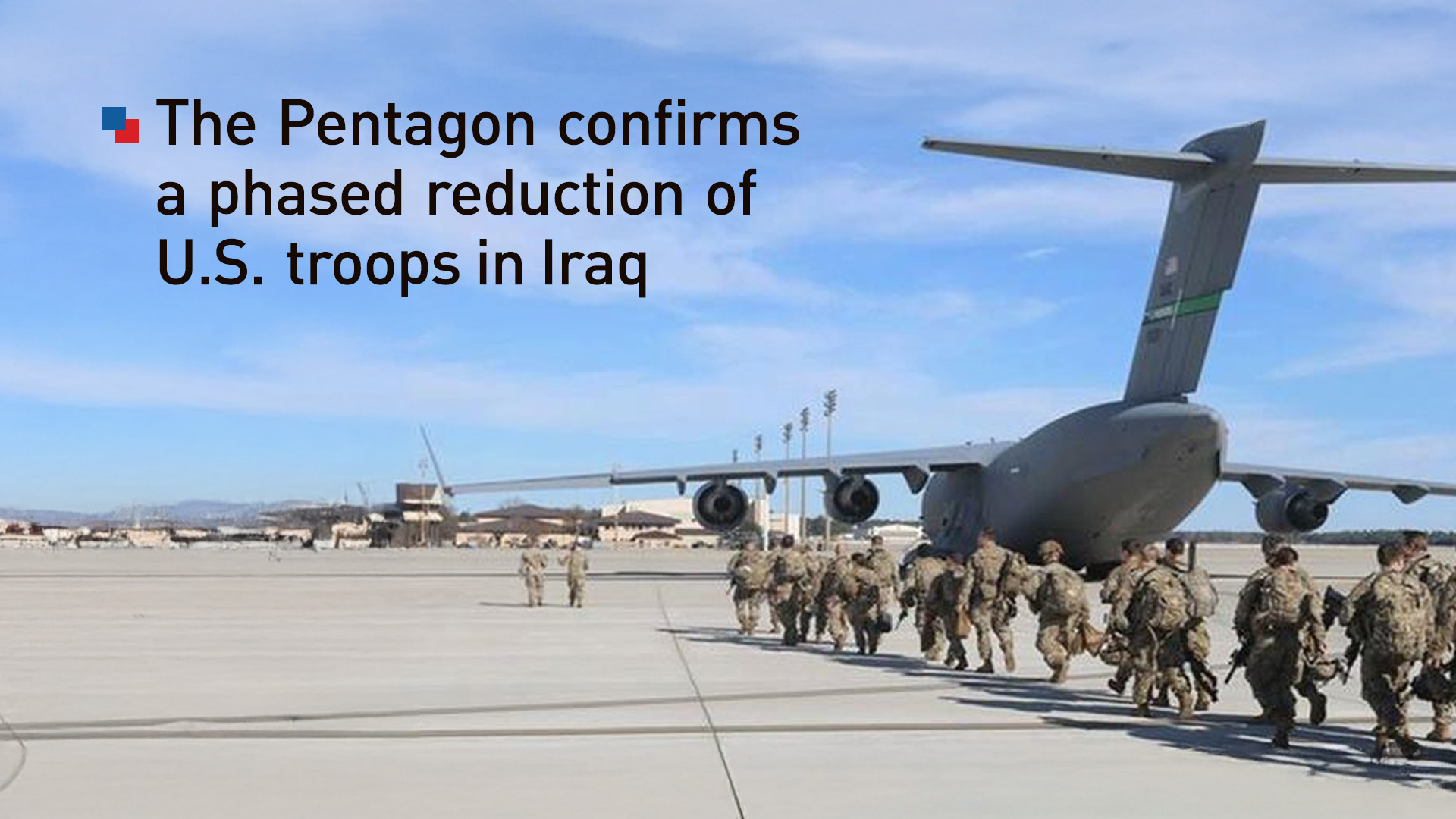Pentagon Confirms U.S. Troop Reduction in Iraq, Transitioning Mission to Erbil and Syria
The Pentagon confirms a phased reduction of U.S. troops in Iraq, with most forces relocating to Erbil and Syria to focus on counter-ISIS operations. The move follows joint U.S.-Iraq agreements and reflects the diminished threat from the militant group.

ERBIL (Kurdistan24) – The United States Department of War has officially announced the commencement of a phased reduction of its military presence in Iraq, describing the move as a reflection of “combined success” achieved with Iraqi and Coalition partners in the long battle against ISIS. Pentagon Chief Spokesman Sean Parnell confirmed on Tuesday, that this transition is taking place in accordance with President Donald Trump’s guidance and the U.S.-Iraq Higher Military Commission’s joint statement of Sep. 27, 2024.
The Pentagon underlined that the reduction of forces represents a historic step toward a lasting U.S.-Iraq security partnership, aligned with American national interests, the Iraqi Constitution, and the U.S.-Iraq Strategic Framework Agreement. “This partnership will support U.S. and Iraqi security and strengthen Iraq's ability to realize economic development, foreign investment, and regional leadership. The U.S. Government will continue close coordination with the Government of Iraq and Coalition members to ensure a responsible transition,” the statement read.
According to Reuters, once the current transition is completed, U.S. troop levels in Iraq will fall below 2,000, with the majority stationed in Erbil. Troops remaining in Baghdad will focus solely on bilateral security cooperation issues rather than the counter-ISIS campaign. A senior defense official told Reuters that: “ISIS is no longer posing a sustained threat to the government of Iraq or to the U.S. homeland from Iraqi territory. This is a major achievement that enables us to transition more responsibly to Iraq leading efforts for security in their own country.”
A senior U.S. defense official told Reuters that most personnel will shift to the Kurdistan Region of Iraq, while maintaining forward bases in northeastern Syria (Western Kurdistan) until at least 2026, and Under the new plan, the U.S. and Coalition forces will now concentrate their efforts on confronting remnants of ISIS in Syria, with Erbil serving as the principal hub for logistical, advisory, and operational activities.
Speaking exclusively to Kurdistan24, a senior Iraqi military source confirmed on Aug. 29, 2025, that U.S. troops will withdrawal from Baghdad. The source said that much of the redeployment has already been carried out in recent days, with large numbers of American personnel evacuated from Ain al-Asad and Victoria bases.
The final stage involves the handover of three key Baghdad sites: the Green Zone, Victoria Base, and the Joint Operations Command headquarters. These locations will be formally transferred to Iraqi forces as remaining U.S. military vehicles, logistical supplies, and equipment are evacuated overnight.
The Iraqi source added that portions of the departing troops will be redeployed to Erbil, where U.S. and Coalition partners will continue operations, while others will temporarily shift to Anbar Province before being transferred into northeastern Syria to maintain missions alongside Coalition allies.
The official clarified that only about 20 percent of troops currently stationed in Baghdad are American, while the remainder are primarily French and Romanian forces serving under the broader Coalition mandate.
A U.S. defense official, responding to Kurdistan24, reiterated that Washington remains committed to ending the Coalition’s military mission inside Iraq by September 2025 but will continue to support anti-ISIS operations from bases in Erbil and Syria through September 2026.
“We do not have anything new to announce right now. The United States continues to review and, as appropriate, adjust its force posture in Iraq in accordance with the U.S.-Iraq Joint Statement on the transition of the Global Coalition to Defeat ISIS in Iraq. As announced, we are committed to end the Coalition’s military mission inside of Iraq by September 2025 and will continue to support defeat ISIS operations in Syria from bases in Iraq through September 2026. After transition, the United States will continue a bilateral security cooperation relationship with Iraq,” the official told Kurdistan24.
The drawdown marks one of the most significant milestones in the trajectory of U.S. involvement in Iraq. Washington first deployed nearly 130,000 troops in 2003 to topple Saddam Hussein, with numbers peaking at around 170,000 by 2007 during the height of sectarian violence. In 2011, under President Barack Obama, the United States formally ended its combat mission, leaving behind only a small advisory presence.
However, the meteoric rise of ISIS in 2014 compelled Washington to redeploy more than 5,000 troops to spearhead the international Coalition against the extremist group. Over the following years, troop numbers steadily declined, reaching around 3,000 in 2021 and approximately 2,500 by 2023. In 2024, Iraqi Defense Minister Thabit al-Abbasi announced that U.S. forces would depart entirely by 2026, an assertion later supported by a Reuters report confirming a phased withdrawal plan.
At the start of 2025, the U.S. had about 2,500 troops in Iraq and over 900 in neighboring Syria as part of the Coalition formed in 2014. This multinational coalition, which drew support from over 60 countries, launched operations on September 23, 2014, with U.S. airstrikes in Syria, later joined by Arab partners such as Saudi Arabia, the UAE, and Jordan, as well as European allies. Its strategy combined intensive airpower, training and arming of Iraqi security forces and the Syrian Democratic Forces (SDF), and robust intelligence support.
The Pentagon stressed that Washington’s enduring partnership with Baghdad will continue under the terms of the U.S.-Iraq Strategic Framework Agreement, with a focus on bilateral security cooperation, economic development, foreign investment, and regional leadership.
The redeployment underscores both the dramatic transformation in Iraq’s security landscape and the United States’ evolving posture in the Middle East. Having once commanded nearly 170,000 troops in Iraq at the height of conflict, Washington is now consolidating a much smaller but strategically positioned force. From Erbil and Syria, American troops will continue the fight to ensure ISIS never regains the capacity to threaten Iraq, the wider region, or the U.S. homeland.
